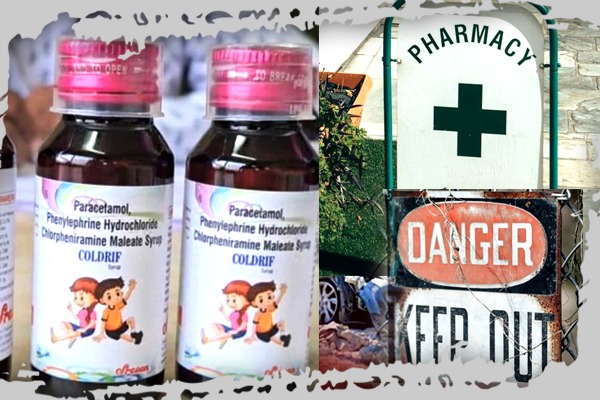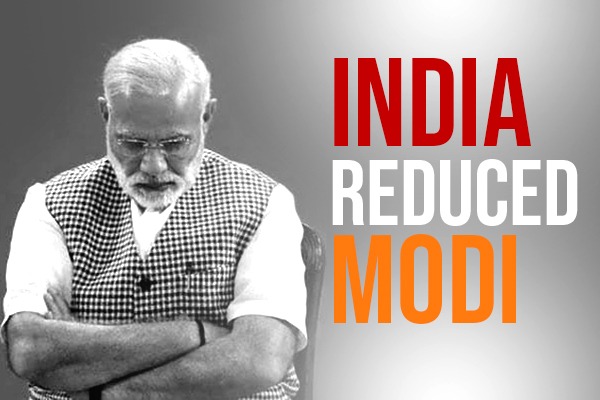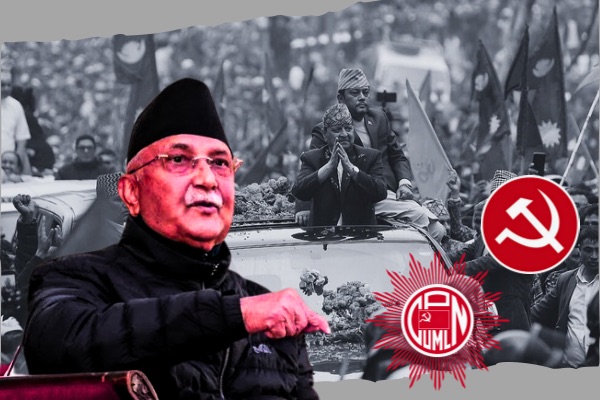Betul and Chhindwara are districts on southern part of Madhya Pradesh bordering Maharashtra. In the month of Septeamber’25, an auto driver living in a small village of Betul district takes his child suffering from cold and fever to the clinic of a local Pediatrician. The Pediatrician happens to be serving in the Government hospital and also maintaining a private clinic. The doctor prescribes him two medicines which he buys from the local chemist. The child stops urination after 3 days of therapy. The worried parents take the child to another specialist who refers them to the district hospital. It was diagnosed as renal failure, that is the child’s kidney was not functioning. They referred the child to Bhopal, capital of Madhya Pradesh. Parents return home after 3 days of treatment at Bhopal. The child dies after 2 days. The poor patients spend all their life’s savings in treatment of a simple ailment, but ultimately the child dies.
The same sequence of event continues in three districts of Madhya Pradesh, mostly in Chhindwara district, and as of today 26 children have died. Cases have been also reported from Rajasthan and Maharashtra. All the children who have succumbed are under 5 years of age and were treated for common cold. Parents had taken their children for treatment of a relatively simple ailment, common cold.
The culprit has been diagnosed as a specific cough syrup “Coldrif “, prescribed to all these children. This cough syrup was manufactured by a Tamil Nadu based pharmaceutical company, “Sresan Pharmaceuticals”. On laboratory examination it was detected that it contained high levels of DEG (Diethylene Glycol). DEG is a toxic chemical used as an industrial solvent in brake fluid and antifreeze.
The levels detected were 500 times the permissible limits. Concentration of DEG was 48.6% in Coldrif. DEG caused acute kidney failure and death of all the children. Children developed vomiting, abdominal pain, diarrhea, kidney failure and death. The sequence of deaths started in September and by mid-October the number of deaths increased significantly, and the authorities and media became proactive.
The local government Pediatrician was arrested for negligent prescription. It is alleged that he knew about such adverse reaction since September. When the hue and cry spreads in different platforms, the owner of the pharmaceutical company was arrested and a case of manslaughter filed against him. Manufacturing license of “Sresan Pharmaceuticals” was revoked and the establishment was sealed. License of two senior drug inspectors of Kanchipuram district has been revoked pending disciplinary action. The lab technician of Sresan Pharma, who was supposed to perform quality test has been arrested. The cough syrup “Coldrif” was banned and other cough syrups having high levels of DEG were detected and banned. WHO issued alert on October 13th, 2025 for use of contaminated cough syrups. An expert committee and SIT (Special Investigation Team) was formed by the MP government to investigate the incident.
The other cough syrups which have been detected to be contaminated with DEG by Central Drugs Standard Control Organization are; Re-Life syrup manufactured by Shape Pharma Pvt Ltd, and Respifresh-TR manufactured by Rednex Pharmaceuticals Ltd; both these companies are based in Gujrat. There were no reported deaths from these cough syrups. Gujrat authorities recalled the two drugs and ordered suspension of manufacturing in the two companies. Rajasthan government suspended all drugs manufactured by Kayson Pharma under its free drug distribution program and suspended the state drug controller.
Three children died in Sikar and Bharatpur district of Rajasthan on October 3rd. They had all been prescribed cough syrup. This time it was dispensed from a government hospital. On testing the cough syrups DEG level was normal but it had Dextromethorphan Hydrobromide. It was manufactured by Kayson Pharma of Jaipur. Rajasthan Government suspended distribution of all medicines manufactured by Kayson Pharma.
Common cold is a common symptom and ailment. The cause in majority cases is viral, and many Pediatricians don’t prescribe cough syrup in children below 5 years. A patient comes to the doctor to get cured from a disease, and the doctor uses his judgement to prescribe medicines to heal the patient. The drug which is supposed to heal becomes the cause of death. We all take cough syrups frequently, and doctors prescribe it often.
What went wrong with the cough syrup? How was it contaminated with DEG? Propylene glycol and glycerol are used in syrups to dissolve active ingredients. Some manufacturers use DEG illegally as solvent as it is much cheaper. The aim is to get maximum profit. Sometimes companies use industrial grade propylene glycol in place of pharmaceutical grade propylene glycol. The industrial grade propylene glycol has more contaminates like DEG. This contaminant was the cause of toxicity.
What was the role of regulatory authorities? How are the drugs tested for contaminants or the quality of the drugs? Multiple regulatory authorities both state and central makes the scene more complicated. India has become the hub of pharmaceutical industry and is a leading global drug producer. Production of drugs is cheap in India as labor cost is low. India exports drugs to many countries in the world. It is almost a small-scale industry mainly concentrated in Gujrat and Himachal Pradesh. Multinational branded companies even don’t have adequate manufacturing facilities, and they depend on these small set ups for manufacturing their products. These establishments have quality control experts for only name’s sake, without any laboratory back up. The state and central drug regulatory authorities lack the infrastructure, manpower, and system to monitor the quality of drugs and to track them. Inspections of each batch of the drugs as per regulations is never implemented. Even if a deviation is detected, no punitive action taken or there is lack of accountability. The nexus between the pharmaceutical industry and political parties in power became clear during the exposure of electoral bonds. They pay huge sums of money to parties in power. Another loophole in the regulatory system is that action against a pharma company can only be taken by the state government where the manufacturing plant is located, and not by the state where the deficiency was detected.
What is the condition of these manufacturing units? A state of filth and neglect. A recent investigation by Indian Express of Sresan Pharma describes a state of chaotic abandonment with heaps of plastic jars, hoses on the floor. Half burnt wrappers of different medicines were found with ash and it was a picture of hurried abandonment by staff of the company. India Today reported 350 violations by the facility.
Deaths due to contamination of cough syrups with DEG is not an isolated event in India. In 1993, 33 children died in Gurugram district, in 2020, 17 children died in Jammu and Kashmir due to DEG contaminated cough syrup ingestion. In 2022-23, Indian made cough syrups exported to Gambia, Uzbekistan, and Cameroon had high level of contamination with DEG. In Uzbekistan 18 children died, the contaminated cough syrup was manufactured by Marion Biotech. In case of Gambia, four cough syrups had high levels of DEG caused 70 deaths, the syrups manufactured by Maiden Pharmaceuticals Ltd. Health authorities had suspended manufacture of cough syrups by these pharmaceutical companies and stringent quality check was introduced for all exports. India is the biggest exporter of generic medicines in the world. These are the officially reported or detected cases. The prestige of the nation is at stake.
Who is responsible or accountable for the loss of these lives? Will we just blame it as system failure and cover it under the carpet? Patient is the end user of the drug, takes the drug with an expectation to get cured. The doctor prescribes a drug based on his scientific knowledge and experience, and the intention is to heal the patient, ignorant of the quality or contamination of the same. The next in chain is the regulatory authority.
In India, drug quality is regulated by a dual control of state and center. Central drug regulatory authority deals mainly with clinical trials and license of new drugs. Quality control and distribution of drugs are mainly done by the state authorities. Each state monitors the quality of drugs manufactured in that state, and this is done by random sampling from each batch. The state regulatory authorities do check quality of drugs supplied to the state from other states, but they cannot take action against the manufacturer (action can only be taken by the state in which it is manufactured).
Regulatory authorities lack manpower, and lab facilities for quality check. Each manufacturer has its own quality control technician, but they never check it stringently. Manufacturers take recourse to all unethical practices for profit. The nexus between manufacturer, regulatory authorities and political bosses corrupts the system. This is the capitalist economic system where profit is the main motive of production, without any ethics or values, and the monster maims and takes away lives with impunity. A socialist state only can ensure health for people.








